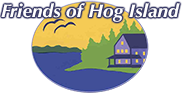1910
1919
1932
1933
1935
1936
1937
1938
1939
1941
1943
1946
1947
1948
1950
1951
1953
1954
1956
1958
1959
1960
1964
1966
1968
1969
1971
1973
1974
1976
1977
1978
1979
1980
1982
1983
1987
1989
1992
1993
1996
1998
1999
2001
2006
2009
2010
2011
2012








































































